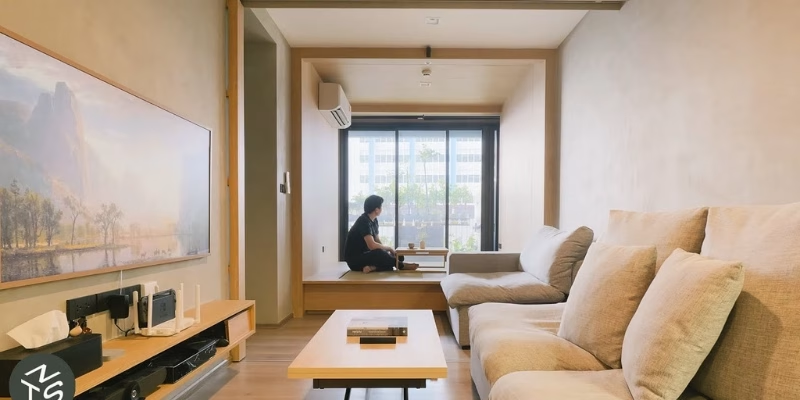Tokyo housing presents diverse options, ranging from compact studios in bustling districts to larger homes in peaceful residential zones. Whether you’re searching for a rental or planning to purchase, understanding the city’s real estate landscape is essential. With its local expertise and bilingual support, Arealty.jp helps clients find the ideal place to live in Tokyo. From choosing the right neighbourhood to handling paperwork, we guide you every step of the way.
Overview of Housing Options in Tokyo
Tokyo, one of the most energetic and fast-paced cities in the world, offers a surprisingly wide range of housing options to suit different lifestyles and budgets. Whether you’re a student, a young professional, or relocating with family, there’s something for everyone. Here’s a breakdown of the most common types of homes you’ll come across in Tokyo:
Apāto (アパート) – Budget-Friendly Apartments
Apāto are small, low-rise apartment buildings usually made of wood or lightweight steel. They’re often found in the suburbs and come with lower rental prices compared to other types of housing. That said, they might lack insulation and soundproofing, so they can get a bit noisy or chilly depending on the season.

Small, cheap apartments with poor insulation and soundproofing.
Mansion (マンション) – Modern Mid- to High-Rise Buildings
Don’t let the name fool you, mansions in Japan aren’t luxury estates. These are sturdy concrete apartment buildings, usually three stories or more, with modern amenities like elevators, security systems, and shared facilities. Because of their construction and comfort, mansions generally come with higher rent than apāto.

Sturdy, modern apartments with higher rent than apāto.
Kashiya (貸し屋) – Standalone Houses for More Space
If space is a priority, renting a standalone house (kashiya) could be the perfect choice. These homes range from traditional Japanese-style houses with tatami floors and sliding doors to more modern homes with multiple bedrooms and full amenities. Keep in mind, though, that availability is limited and competition can be tough in central Tokyo.

Spacious standalone homes, limited availability in central Tokyo.
Share Houses – Community Living on a Budget
Share houses are great for newcomers to Tokyo or anyone looking to save money. You’ll have your private room while sharing common areas like the kitchen, bathroom, and living room with other residents. They’re usually furnished and ready to move in, plus, they’re a great way to meet people and build a community.

Affordable, furnished rooms with shared spaces and social living.
Danchi – Affordable Public Housing
Danchi are public housing complexes originally built after World War II to meet high housing demand. They offer some of the lowest rents in the city and usually don’t require key money or guarantors. However, many danchi are older buildings and may lack modern amenities.

Old public housing with low rent, few modern amenities.
Weekly/Monthly Mansions – Flexible Short-Term Stays
These fully furnished apartments are available for short-term rental, ideal if you’re staying in Tokyo temporarily or still figuring out your long-term plans. They’re hassle-free (no key money or guarantor needed), but the convenience comes with a slightly higher price tag compared to standard leases.
Whatever your needs, whether you’re looking for affordability, flexibility, or space, Tokyo has housing options to suit you. Taking time to research your choices and understand the rental process will go a long way in helping you find a comfortable home in this vibrant city.
Searching for a Place to Live: What Are Your Choices?
Finding a home in Tokyo can feel a little overwhelming at first, especially if you’ve just arrived. But once you get clear on what you’re looking for and how much you’re comfortable spending, the process becomes much more manageable. Maybe you want a small private apartment close to work, or perhaps a shared living space where you can meet new people. If you’re only staying for a short while, furnished apartments that rent by the week or month might be a smart way to settle in without too much commitment.
Once you’ve got your priorities straight, it’s time to explore your options. There are plenty of websites to browse, like Suumo, Real Estate Japan, and GaijinPot, which are helpful for both locals and foreigners. If you’re already in Tokyo, walking into a real estate office like Apamanshop or Minimini is a great way to see listings in person and get direct advice. Don’t forget to ask around, sometimes friends, coworkers, or online communities for expats can point you toward great places that aren’t listed publicly.
If you’re still adjusting to the city, starting with a shared house or a serviced apartment can give you the flexibility you need while you settle in. The key is to stay curious, ask questions, and give yourself time to find the right fit. Tokyo is a big and busy city, but with a bit of patience and research, you’ll find a place that feels like home.

Start simple, search online, ask around, and be patient.
Renting Property in Japan: How It Works
Getting a place to live in Japan might feel unfamiliar at first, especially if you’re coming from another country, but once you understand the steps, it becomes much easier to manage. To begin, take some time to think about your needs. How much can you spend comfortably each month? What kind of living environment suits you best? Do you prefer a quiet neighbourhood, or somewhere close to shops and train stations? Knowing your preferences will help narrow down your options.
When you’re ready to start looking, there are several ways to search for available homes. Online property sites like Suumo, GaijinPot, or Real Estate Japan are great tools to explore what’s out there. If you’re already in the city, stopping by a local agency can give you more personalized advice and access to listings that may not be online.
Once you find a place you’re interested in, the next step is submitting your application. Most landlords will ask for documents such as your residence card, proof of income, and information about someone who can act as your guarantor. If you don’t have one, you can usually work with a guarantor company for a fee. Also, be prepared for several upfront payments. These may include a refundable deposit, a one-time gift to the landlord known as key money, and a service charge for the real estate agent.
After your application is accepted, you’ll review and sign a lease agreement. Take your time to read through the terms carefully, so there are no surprises later on. Once the paperwork is complete, you can move in and start setting up essentials like utilities and internet.
Although the process involves a few more steps than in some other countries, being well-informed and organised will help things go smoothly. With a little preparation, you’ll be settling into your new home in Japan in no time.

Know your needs, search smart, prepare documents, and stay organised.
Reliable Sources for Finding a Rental in Tokyo
Looking for a place to stay in Tokyo? Don’t worry, you’re not alone. Whether you’re a newcomer or someone looking to move within the city, there are many trustworthy platforms and agencies ready to help. Below are some of the best resources to begin your search:
Top Websites for Foreign Renters
These platforms are especially useful if you’re looking for listings in English or need flexible rental terms:
- GaijinPot Apartments: A go-to site for foreigners. Listings are fully in English and often don’t require a Japanese guarantor.
- Real Estate Japan: Offers thousands of properties across Tokyo. You can filter by price, area, and special options like “no key money” or “furnished.”
- Apartment Japan: Great for short- or medium-term stays. Online applications are available, and the interface is user-friendly.
Real Estate Agencies That Speak Your Language
Prefer to speak directly with someone who understands your needs? These real estate agencies offer bilingual support and can walk you through the rental process step by step:
- ARealty.jp: A trusted real estate agency for expats, offering support in English, Vietnamese, and Japanese. Their team helps international clients find homes that match their needs and budget, whether it’s a central apartment or a quiet residential space, with clear guidance throughout the rental process.
- Tokyo Apartment Inc.: Known for its hands-on service, Tokyo Apartment Inc. goes the extra mile to assist foreign residents in securing a place that fits both their preferences and paperwork. They’re helpful, flexible, and well-versed in working with non-Japanese speakers.
House or Apartment: Which Living Style Fits You Best?
Deciding between a house and an apartment in Tokyo hinges on various factors, including space, privacy, location, and financial considerations. Here’s a breakdown to help you determine which living style aligns best with your needs:
Living in a House: Space and Independence
Opting for a standalone house in Tokyo offers several advantages:
- Ample Space: Houses typically provide more room, making them ideal for families or those needing extra space for work or hobbies.
- Privacy: With no shared walls, you can enjoy a quieter environment and greater personal freedom.
- Customisation: Homeowners have the liberty to renovate or modify their space to suit personal preferences.
- Considerations: Houses often come with higher maintenance responsibilities and may be located farther from city centres, potentially increasing commute times.
Living in an Apartment: Convenience and Amenities
Choosing an apartment in Tokyo comes with its own set of benefits:
- Urban Accessibility: Apartments are commonly situated in central locations, offering easy access to public transportation, shopping, and dining options.
- Lower Maintenance: Building management typically handles maintenance tasks, reducing personal responsibilities.
- Amenities: Many apartment complexes provide additional facilities such as security services, gyms, or communal spaces.
- Considerations: Apartments may offer less space and privacy compared to houses, and residents might need to adhere to building regulations.
Making Your Choice
When choosing between a house and an apartment in Tokyo, consider your lifestyle, budget, and long-term plans. If you value space and privacy and are prepared for additional maintenance, a house might be suitable. Conversely, if convenience and lower upkeep appeal to you, an apartment could be a better option.
Assess your priorities and evaluate properties accordingly to find the living situation that best fits your needs in Tokyo.
Understanding the Cost of Living in a Tokyo Home
Living in Tokyo offers an incredible mix of convenience, culture, and excitement, but it’s important to know what kind of expenses to expect. Housing is typically the largest cost. In central areas, a one-bedroom apartment can run around ¥170,000 per month, while similar spaces on the outskirts may cost nearly half that. Larger places suited for families, especially in the city centre, often exceed ¥430,000. On top of rent, utilities like electricity, gas, and water usually total around ¥15,000 to ¥20,000 each month, depending on your usage and the season. Internet and mobile services add another ¥10,000 to your monthly bills.
Food expenses vary, but for a single person, weekly grocery costs can land between ¥15,000 and ¥25,000, depending on preferences and eating habits. Getting around Tokyo is efficient thanks to its world-class transit system, though regular commuting can still cost between ¥17,000 and ¥22,000 per month. When you add it all up, most individuals living alone in Tokyo spend roughly ¥320,000 to ¥330,000 each month, depending on lifestyle choices and where they live. Being aware of these typical costs can help you budget more confidently and enjoy city life without financial surprises.

Living in Tokyo involves housing, utilities, food, and transport expenses.
Step-by-Step: How to Rent a Property in Tokyo
Here’s a simple step-by-step guide to help you understand the process and move in with confidence:
- Set Your Budget: Figure out how much you can afford, including upfront costs like deposit, agency fee, key money, and guarantor fees. These can add up to several months’ rent.
- Pick the Right Area: Choose a neighbourhood that fits your lifestyle and commute. Popular areas include Shibuya for nightlife, Shinjuku for business, or Setagaya for quiet family living.
- Start Your Search: Look on sites like GaijinPot or Real Estate Japan, or visit local agencies such as ARealty.jp. You can also ask in expat groups for recommendations.
- Prepare Your Documents: You’ll need your passport, residence card, proof of income, and an emergency contact. If you don’t have a guarantor, you may need a guarantor company.
- Submit an Application: Once you’ve found a place you like, apply and go through a screening process. Landlords will review your background and financial stability.
- Sign the Contract: After approval, carefully review the lease terms. Check details like lease length, renewal rules, and maintenance responsibilities before signing.
- Move In and Set Up Utilities: Arrange electricity, gas, water, and internet. Don’t forget to register your new address at your local ward office within two weeks of moving.
Conclusion
Navigating the housing market in Tokyo may feel complicated at first, but once you understand each stage, from setting a budget and selecting the right area to preparing documents and moving in, it becomes a straightforward journey. Whether you’re deciding between a spacious house and a convenient apartment, or simply trying to manage your living costs, the key is to plan and make informed choices.
And if you’re planning to relocate to Japan’s major cities and haven’t found your ideal home yet, don’t hesitate to connect with An Lac. Their team provides free, personalised support to help you find a place that truly fits your lifestyle and preferences, making your move smoother and more stress-free.






Leave a Reply